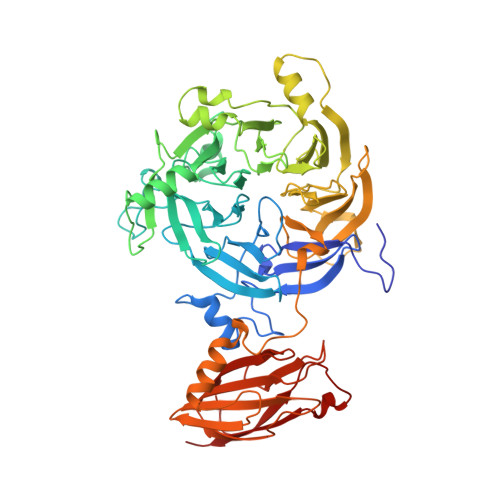A novel type of catalytic copper cluster in nitrous oxide reductase.
Brown, K., Tegoni, M., Prudencio, M., Pereira, A.S., Besson, S., Moura, J.J., Moura, I., Cambillau, C.(2000) Nat Struct Biol 7: 191-195
- PubMed: 10700275
- DOI: https://doi.org/10.1038/73288
- Primary Citation of Related Structures:
1QNI - PubMed Abstract:
Nitrous oxide (N20) is a greenhouse gas, the third most significant contributor to global warming. As a key process for N20 elimination from the biosphere, N20 reductases catalyze the two-electron reduction of N20 to N2. These 2 x 65 kDa copper enzymes are thought to contain a CuA electron entry site, similar to that of cytochrome c oxidase, and a CuZ catalytic center. The copper anomalous signal was used to solve the crystal structure of N20 reductase from Pseudomonas nautica by multiwavelength anomalous dispersion, to a resolution of 2.4 A. The structure reveals that the CuZ center belongs to a new type of metal cluster, in which four copper ions are liganded by seven histidine residues. N20 binds to this center via a single copper ion. The remaining copper ions might act as an electron reservoir, assuring a fast electron transfer and avoiding the formation of dead-end products.
Organizational Affiliation:
Architecture et Fonction des Macromol¨¦cules Biologiques, UPR 9039, CNRS, 31 Chemin Joseph Aiguier, 13402 Marseille CEDEX 20, France.


















